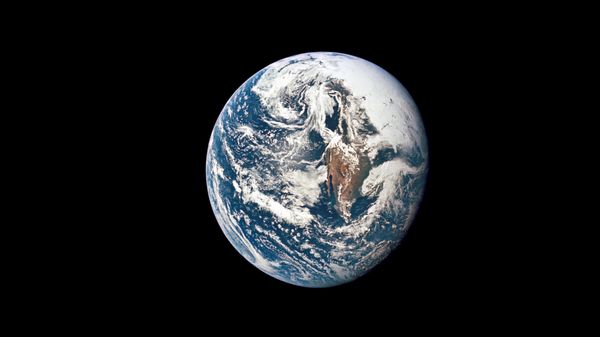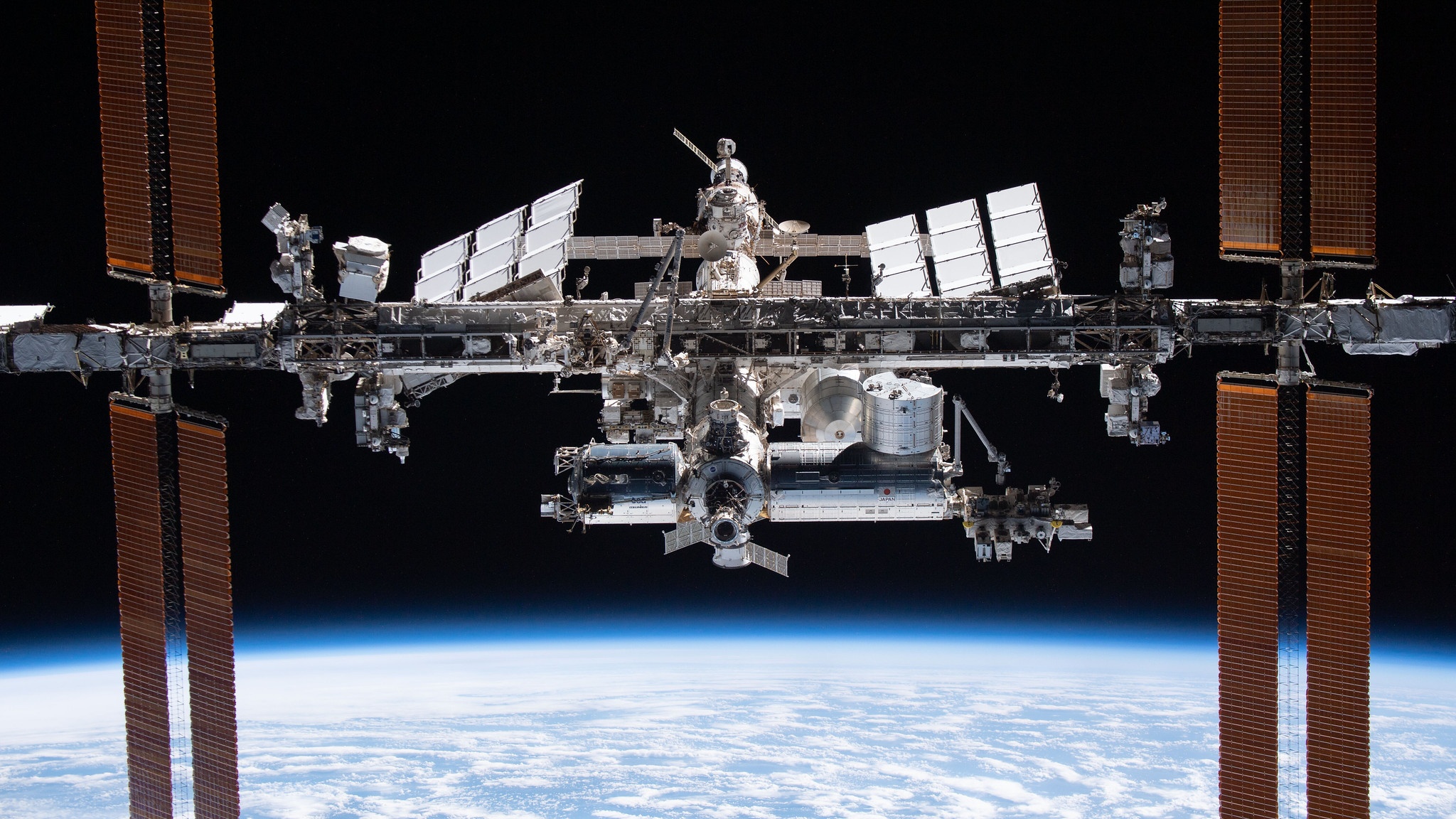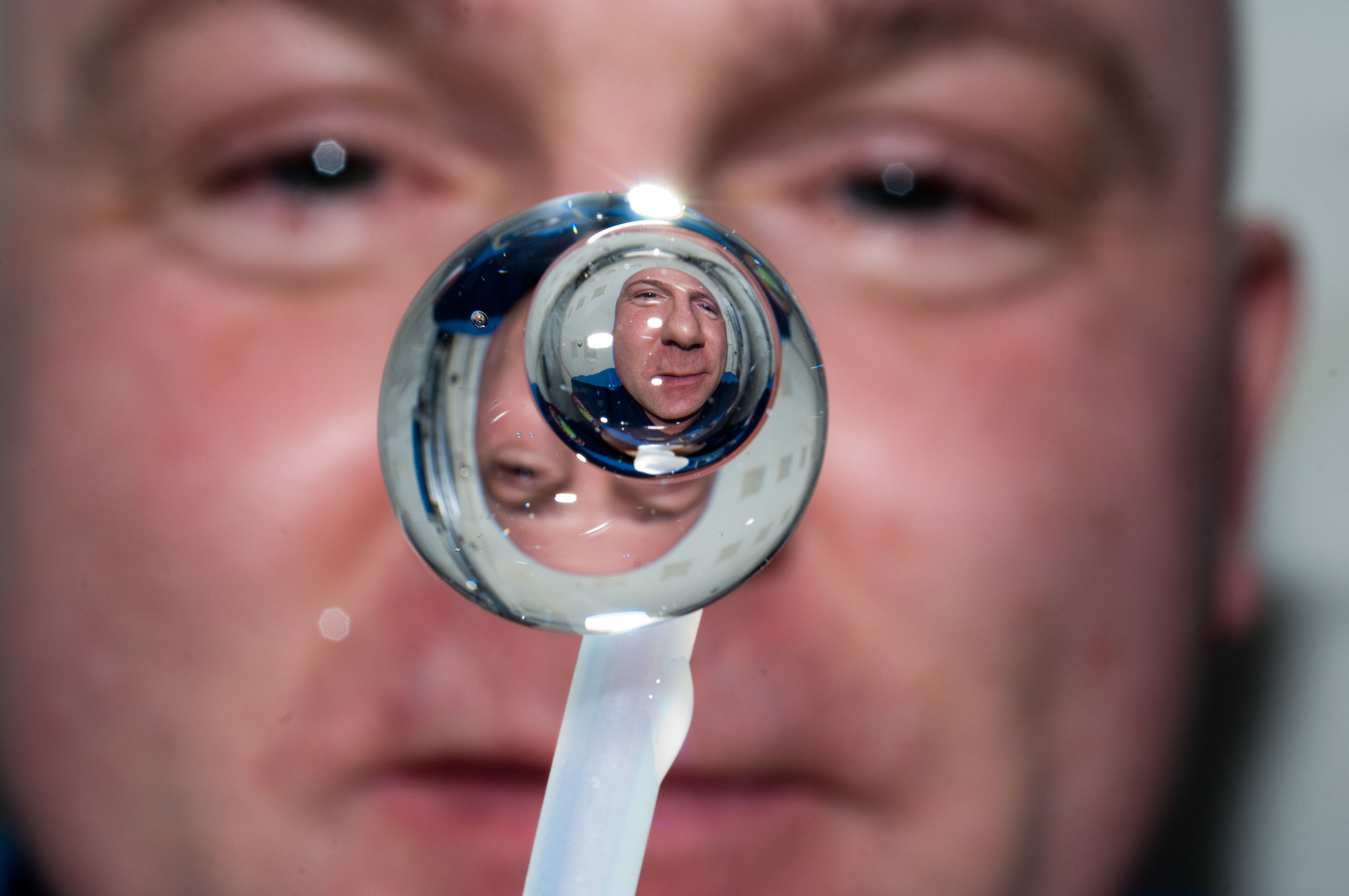Earth is a spaceship like the ISS — let me explain
The environments in space habitats and on the Earth are both closed-loop systems, only on vastly different scales.

Imagine living in a place where your survival depends upon living within your limits, not consuming more food and energy than you produce, creating enough fresh water and air to live on, reducing waste to a bare minimum, recycling everything that you can, and avoiding contaminating the environment around you. This is what astronauts must face, to an extent, on board the International Space Station, and what they would have to face to a greater extent in future settlements on the moon or Mars.
But it's also how we have to live on Earth if we are to protect our environment, which is one of the themes of this year's World Space Week, running between Oct. 4 to Oct. 10.
A space station, or a lunar base, is largely a closed-loop system. What we mean by this is that it must produce its own resources and then recycle them, feeding them back into the system because they are limited. Consume too much, and astronauts might run out of air, food, water or energy, which could be fatal. Sure, there are occasional resupplies from Earth, however, so they are not 100% closed loop systems. What is a completely closed loop, however, is Earth itself.
Spaceship Earth
Think about it. Our planet has a certain carrying capacity, or what the Club of Rome — a think-tank of academics, business leaders and politicians — called the "limits to growth" in their famous 1973 report. They warned that Earth was beginning to reach its carrying capacity, and soon we would be generating too much energy, eating too much food, not producing enough fresh water, and pouring greenhouse emissions into the atmosphere that would render our global closed-loop system unsustainable. Indeed, as climate change grows increasingly more damaging year upon year, leading to more frequent droughts, famines, wildfires and extreme weather, some might say we have already reached that stage.
Related: How satellite data has proven climate change is a climate crisis
This is where learning to live in space can help teach us how to live sustainably on Earth. It's not a new idea, but a recent paper by researchers at the German Aerospace Center in the journal Sustainable Earth Reviews succinctly summed up how technologies designed for living in closed-loop space habitats can be applied to Earth.
They described how a space habitat must fulfill several functions in order to remain a closed-loop system, and how each of these can be re-applied to the larger scale of the Earth.
Breaking space news, the latest updates on rocket launches, skywatching events and more!
First, resources must be cultivated and fed into the system. In this case, resources means anything and everything that a habitat requires to function, from food to energy. This concept has to be managed carefully, however, because left unchecked it is open to exploitation. For example, if all the water-ice is mined from the lunar regolith too quickly, then there would be none left to supply a lunar base for very long.
Second is the recycling of those resources so they don't get used up too quickly. In a closed-loop habitat, unrecycled waste is costly and can diminish the habitat over time because it means there is progressively less of any given resource to go around. It can also pollute the environment of the habitat, again diminishing it.
Third is self-sufficiency. Barring the occasional resupply from Earth, a space habitat needs to be able to produce and repair everything that it needs.
Finally, a closed-loop habitat must be resilient enough to support its crew and any other animal or plant life, indefinitely. If the system breaks down because it is being abused, the lifespan of the habitat becomes severely reduced.
We can see how each of these can be applied to Earth. Intensive farming, mining, fishing and so on shows how we are exploiting the cultivation of resources in our closed-loop Earth. Recycling can help us maintain our resources without fouling the environment with waste. If communities can become more self-sufficient, then carbon dioxide emissions can be reduced because resources are not having to be transported to communities from external regions.
Earth has shown resilience for life for almost four billion years, but our careless approach to the environment by overconsumption is testing that resilience.
Space on Earth
Interestingly, technologies developed for use in space can also help on Earth.
A classic example is solar panels. Invented back in 1954, during the era of coal-fired power stations, solar panels weren't exactly all the rage because there wasn't much use for photovoltaic cells on Earth at the time. Rather, solar panels first got their breakthrough in space, providing power for satellites as early as 1958 with the Vanguard 1 satellite. The amount of money that space-faring nations were able to pour into R&D for solar cells meant that, by the 1970s, those cells were capable enough to be used on Earth. Today, we find solar cells everywhere, the average panel producing 1.5 kilowatts of electricity each day; and, as of 2023 solar power generates a total of 5.5% of the world's electricity without the harmful emissions of coal-fired power stations or the toxic waste of nuclear fission reactors.
Another technology developed in space that can help support a more sustainable way of living on Earth are food-based. Crops are being grown by astronauts on the International Space Station.
The experiment, known as the Vegetable Production System, first produced lettuce in 2021, which was harvested by NASA astronaut Michael Hopkins. The experiment revolves around planting seeds in a "seed pillow" along with the controlled release of fertilizer and clay and the use of specially designed LED lights to promote photosynthesis, emitting more red and blue light that encourages plant growth. These lights are now being adapted for "vertical farming" on Earth, which is a sustainable way of growing crops that don't take up too much land in urban areas and recycle their water, just like on the space station. By growing food in vertical farms close to built-up communities, humans can cut down on transport costs and intensive farming, both of which produce high carbon dioxide emissions.
The water cycle
Speaking of water, it is paramount that water is recycled on the space station, because its weight means that it is costly to bring up from Earth. All the water on the International Space Station is recycled through a water recovery system, as part of the station's Environmental Control and Life Support System, that can turn water vapor humans breathe out into the air, sweat and even urinate into drinking water (which apparently, astronauts claim, tastes quite good!). The Urine Processor Assembly employs vacuum distillation to extract clean water from astronaut pee, leaving behind a yucky-sounding "urine brine." A Brine Processor Assembly has even been developed because usable water is still present in this brine — in a closed-loop system, every resource has to be utilized to its fullest extent.
Although we don't need to drink water from urine on Earth, there are many locations around the globe where fresh, clean water is in short supply. NASA's water recovery technology has been licensed to companies to make portable filters that allow communities to obtain clean water from contaminated supplies.
Carbon cleaning
Along with water vapor, astronauts breathe out carbon dioxide.
The astronauts on Apollo 13 learned, first-hand, the dangers of carbon dioxide build-up when they had to hurriedly build a carbon-dioxide filter out of spare parts on their way home from the moon. On the International Space Station, carbon dioxide must be similarly scrubbed out of the air.
Previously, oxygen was produced on the ISS by a system that extracted it from 400 liters of water brought up from Earth each year. Therefore, it was not a closed-loop system. Now, the European Space Agency has developed the Advanced Closed Loop System (ACLS) that is able to recycle 50% of the carbon dioxide on the station into oxygen and no longer necessitates that large amounts of water be brought up from Earth. The ACLS's Carbon dioxide Reprocessing Assembly mixes hydrogen and carbon dioxide extracted from the air to produce water and methane. The methane is vented into space as waste, but an Oxygen Generation Assembly is able to split the water into oxygen and hydrogen, the latter of which goes back into the ACLS system to begin the cycle again.
However, prior to the ACLS, carbon dioxide was removed exclusively via a mineral called zeolite, which has pores small enough to trap carbon dioxide molecules in, then flush them into space. Now, Stefano Brandani and Giulio Santori of the University of Edinburgh are exploring ways of using the zeolite technology to reduce carbon dioxide in Earth's atmosphere. They envisage giant fans sucking in air filled with carbon dioxide towards stations made from beds of zeolite that remove the carbon dioxide from the air. The same technology could also be used nearer the source, removing carbon dioxide from waste gases produced by industry before they are released into the atmosphere. Although it cannot remove all the carbon dioxide from the atmosphere and prevent global warming, carbon-capture technology could help mitigate climate change and help the world stay within the target of no more than 1.5 degrees Celsius of global warming.
Given the criticism often leveled at space programs worldwide that they are expensive luxuries then money could be spent elsewhere on Earth instead, it is ironic that technology developed to help people live in space could help us live better on Earth. Of course, space travel is not environmentally friendly per se — a rocket can emit up to 300 tons of carbon dioxide per launch — but if applied correctly, the technology used in space can certainly redress the balance by helping us become a greener planet. Earth, after all, is our most incredible spaceship.
This article is part of a special series by Space.com in honor of World Space Week 2024, which ran from Oct. 4 to Oct. 10 and explored how space technology can help fill the toolboxes of climate scientists.

Keith Cooper is a freelance science journalist and editor in the United Kingdom, and has a degree in physics and astrophysics from the University of Manchester. He's the author of "The Contact Paradox: Challenging Our Assumptions in the Search for Extraterrestrial Intelligence" (Bloomsbury Sigma, 2020) and has written articles on astronomy, space, physics and astrobiology for a multitude of magazines and websites.


